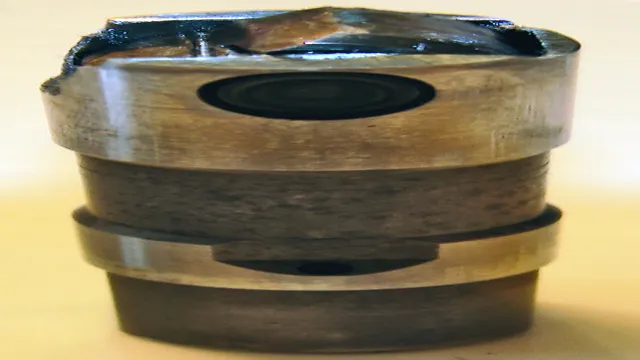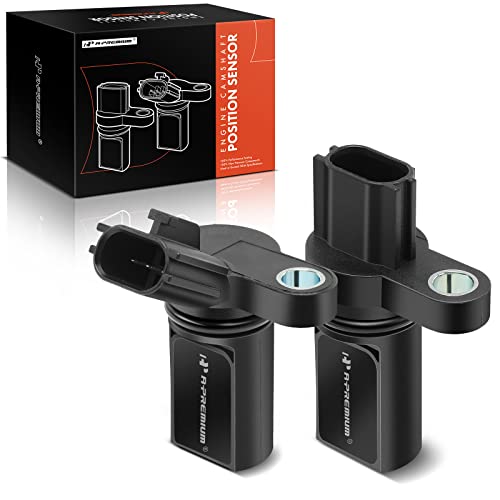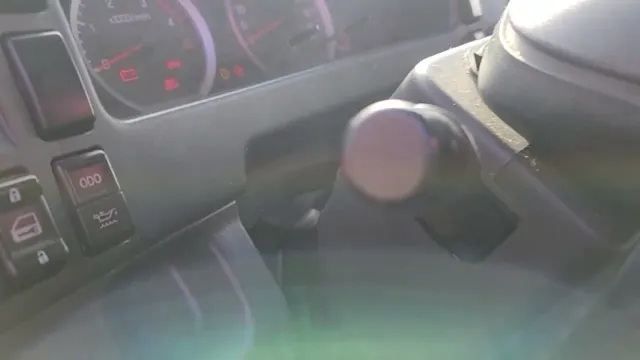What Are The Symptoms Of A 6.0 Powerstroke Turbo Failure? [2023]
The 6.0 Powerstroke engine, widely used in Ford trucks from 2003 to 2007, is known for its power and performance. However, like any complex mechanical component, the turbocharger in the 6.0 Powerstroke engine is susceptible to wear and potential failure over time. Understanding the symptoms of turbocharger failure is crucial for timely diagnosis and necessary repairs to avoid further damage to the engine.
In this blog post, we will explore the common symptoms that may indicate a failing turbocharger in a 6.0 Powerstroke engine. Recognizing these signs early on can save you from costly repairs and prevent extensive engine damage. Whether you’re a truck owner or a mechanic servicing these engines, this information will provide valuable insights into turbocharger issues specific to the 6.0 Powerstroke.
From loss of power to abnormal noises and excessive smoke, we’ll discuss the warning signs that could indicate turbocharger problems. By familiarizing yourself with these symptoms, you’ll be better equipped to address turbo-related issues promptly, ensuring the longevity and reliable performance of your 6.0 Powerstroke engine.
What Is The Sign Of 6.0 Powerstroke Turbo Failure?
Signs of 6.0 Powerstroke turbo failure can manifest in various ways, indicating potential issues with the turbocharger system. Here are some common signs to look out for:
Loss of Power
A significant decrease in engine power is a typical symptom of turbocharger failure. If you notice a significant lack of acceleration or difficulty maintaining speed, it could indicate a problem with the turbocharger.
Excessive Smoke
Turbocharger failure may cause an increase in exhaust smoke. Pay attention to the color and consistency of the smoke. Excessive black smoke could indicate fuel-related issues, while white or blue smoke might suggest oil leakage into the combustion chamber, possibly caused by a failing turbocharger.
Unusual Noises
A failing turbocharger may produce distinct noises. If you hear a whining or grinding sound coming from the engine bay during acceleration or under load, it could be an indication of turbocharger problems. Additionally, a noticeable increase in turbo spooling noise may also suggest issues.
Boost Pressure Fluctuations
The 6.0 Powerstroke’s turbocharger relies on boost pressure to deliver optimal engine performance. If you experience inconsistent or fluctuating boost pressure, such as sudden drops or surges, it could signify a malfunctioning turbocharger.
Oil Consumption and Leaks
Turbocharger failure can lead to oil leaks or increased oil consumption. Keep an eye out for oil stains or puddles beneath the vehicle, as well as a significant decrease in oil levels between oil changes.
Check Engine Light
In some cases, turbocharger-related issues can trigger the vehicle’s onboard diagnostics system, resulting in an illuminated check engine light. If the turbocharger is the underlying cause, diagnostic trouble codes (DTCs) related to boost pressure or turbo performance may be stored.
Lists Of 6.0 Powerstroke Turbo Failure Symptoms
Certainly! Here is a list of symptoms commonly associated with 6.0 Powerstroke turbo failure:
1. Loss of Power: Decreased engine performance and a noticeable lack of power during acceleration or when towing heavy loads.
2. Excessive Smoke: Abnormal amounts of smoke emitted from the exhaust, including black smoke (indicating fuel-related issues) or white/blue smoke (suggesting oil leakage into the combustion chamber).
3. Unusual Noises: Whining, grinding, or rattling sounds coming from the engine bay, particularly during acceleration or under load.
4. Boost Pressure Fluctuations: Inconsistent or fluctuating boost pressure, such as sudden drops or surges, which can impact engine performance.
5. Oil Consumption and Leaks: Increased oil consumption between oil changes or noticeable oil leaks, often caused by a failing turbocharger.
6. Check Engine Light: Illumination of the vehicle’s check engine light, potentially accompanied by specific diagnostic trouble codes (DTCs) related to turbocharger performance or boost pressure.
7. Reduced Fuel Efficiency: A decrease in fuel efficiency, as the turbocharger may not be operating optimally, leading to inefficient combustion.
8. Lack of Turbocharger Spooling: Delayed or reduced turbocharger spooling, resulting in a noticeable delay in power delivery or sluggish acceleration.
9. Excessive Exhaust Gas Temperature (EGT): Higher than normal EGT readings, indicating inadequate cooling and potential turbocharger malfunction.
10. Oil Contamination: Oil contaminated with debris or excessive carbon buildup, which may indicate a failing turbocharger.
What To Do When You Detect 6.0 Powerstroke Turbo Failure?
If you detect a turbo failure in a 6.0 Powerstroke engine, it is essential to address the issue promptly to prevent further damage and ensure the longevity of your vehicle. Here are the steps you can take:
Confirm the Turbo Failure
Look for common symptoms of turbo failure, such as decreased power and acceleration, excessive smoke from the exhaust, a whining or grinding noise from the turbocharger, or an oil leak around the turbo area. If you’re unsure, it’s best to consult a qualified mechanic or take the vehicle to a reputable repair shop for diagnosis.
Assess the Extent of Damage
A turbo failure can have various causes, including worn bearings, damaged seals, or foreign object ingestion. The mechanic will inspect the turbocharger thoroughly to determine the exact cause and assess the extent of the damage. They may need to disassemble the turbocharger for a closer examination.
Replace or Rebuild the Turbocharger
Depending on the severity of the damage and the condition of the turbocharger, you have two main options: replace it with a new or remanufactured turbocharger or rebuild the existing one. The choice will depend on your budget, availability of parts, and the expertise of your mechanic. Rebuilding can be a cost-effective solution if the damage is not extensive.
Inspect the Intake and Exhaust Systems
Turbocharger failures can sometimes be caused by issues in the intake and exhaust systems. It’s crucial to inspect these components to identify any blockages, leaks, or other problems that could have contributed to the turbo failure. Clear any obstructions, repair or replace damaged parts as necessary.
Address Underlying Issues
The 6.0 Powerstroke engine is known for certain design flaws, and addressing these underlying issues can help prevent future turbocharger failures. Some common areas to address include the EGR (exhaust gas recirculation) system, oil cooler, head gaskets, and fuel injectors. Consult with a knowledgeable mechanic who is familiar with the 6.0 Powerstroke engine to determine the best approach.
Regular Maintenance and Care
Once the turbocharger is repaired or replaced, ensure you follow the manufacturer’s recommended maintenance schedule for your vehicle. Regular oil and filter changes, clean fuel, and proper care of the engine will help prevent future issues and optimize the lifespan of the turbocharger.
Is Replacing A 6.0 Powerstroke Turbo Typically Expensive?
Replacing a 6.0 Powerstroke turbo can be moderately expensive. The cost will depend on several factors, including the type of turbocharger (new or remanufactured), the brand, the labor charges at the repair shop, and any additional parts or repairs required.
On average, a new or remanufactured turbocharger for a 6.0 Powerstroke can cost anywhere from $800 to $2,000 or more. However, keep in mind that these prices can vary significantly depending on the specific turbocharger model and where you purchase it.
In addition to the cost of the turbocharger itself, you should also consider the labor charges for removing the old turbocharger and installing the new one. Labor costs can vary depending on the location and the shop’s hourly rates, but you can generally expect to spend several hours of labor on the turbocharger replacement. Labor costs typically range from $300 to $800 or more, depending on the shop rates.
It’s important to note that these are rough estimates, and actual costs can vary based on the factors mentioned above. It’s always a good idea to get multiple quotes from reputable repair shops to compare prices and ensure you’re getting a fair deal.
Furthermore, if additional repairs or parts are needed, such as addressing underlying issues or replacing related components, these can add to the overall cost of the turbo replacement.
Overall, while replacing a 6.0 Powerstroke turbo can be a significant expense, it’s crucial to address turbocharger issues promptly to avoid further damage and more costly repairs down the line.






